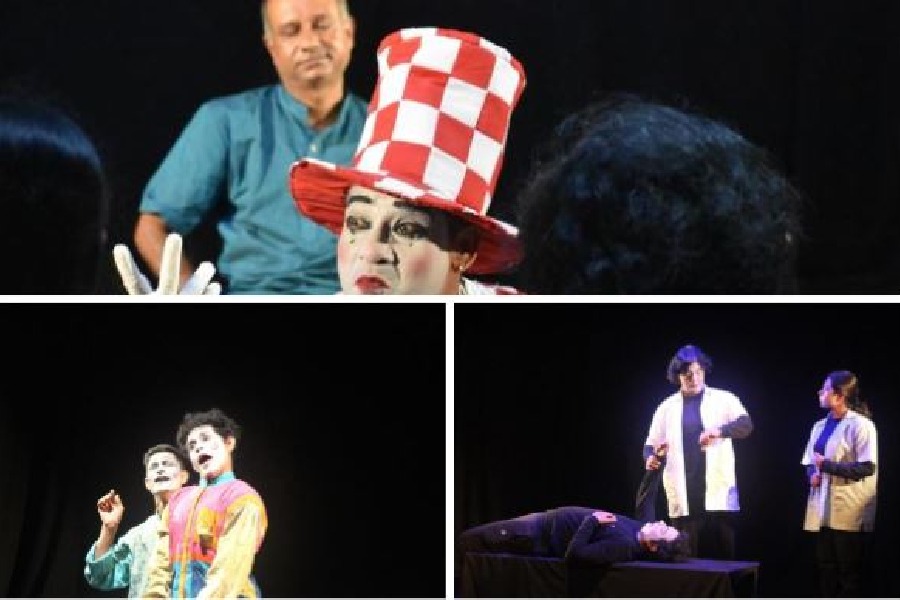Does mention of the word “mime” conjure up the image of a figure in black bodysuit, with his face painted white? At the national mime festival at CK Block, there were silent clowns in colourful attire, some group acts, some actors with no make-up, and there were even stories from The Mahabharata.
The week-long festival was hosted at the National Mime Institute near Tank 9 and presented about 20 shows by actors from across the country.
Ravi Kanwal, a former passout of the institute, had come from Saharanpur to enact a piece on the challenges faced by a sculptor. Asif Sher Ali Khan of Rajasthan performed a 20-minute version of Karna Bharam, written by the third-century Sanskrit playwright Bhasa.
“This piece is on the burden weighing heavily on Karna’s shoulders as he prepares for war — his mother’s revelation, his guru’s curse, his guilt, his impending fate...” said the actor from Do Qadam Theatre Society.
“Mime is — neither easier nor tougher but — a part of theatre. Traditional theatre has four aspects — angika (gestures, facial expressions), vachika (dialogue, voice modulation), aharya (props, costumes) and satvika (portraying the emotional state of characters). In mime, vachika is suppressed so we have to play up the other three weapons,” Khan explained.
Pranab Jyoti Das from Assam dressed up like a clown, invited the audience on stage, and improvised on the spot. “Improvisation is the art of responding. One has to be flexible and open to everything,” said Das, who is a government employee. “I had election duty this week but took special permission to come to Calcutta as India has very few mime festivals.”
Most plays were on social causes. Jalpaiguri Srishti Mime Theatre presented a group act about how the powerful exploit the weak. “While we do not want the onus of bringing about change in society, we want the audience to at least reflect,” said Sabyasachi Dutta of the group, adding how encouraged they felt with the response. “Some in the audience came to watch the festival on all seven days,” he said.
Kunal Motling used no face paint for his act. The actor from Mumbai also teaches silent story-telling at schools, blind schools, and juvenile homes. “The blind see better than us,” he assured. “I physically demonstrate, say, lifting a bottle so they estimate its shape and weight but thereafter woh mann ki ankhon se dekhte hai. Mime helps juvenile home inmates concentrate as one needs to be in the moment to perform.”
Madhurima Goswami of the host college performed a powerful solo act based on The Infanticide of Marie Farrar, by German playwright Bertolt Brecht. The act was about a poor woman who is driven to kill her child. “There is a surplus of talent in theatre but mime is still a niche market. The way schools hire separate teachers for eastern and western dances, they should be encouraged to do the same for drama and mime classes,” she said.
The director of the institute, Niranjan Goswami, said that watching good performances was an integral part of an actor’s learning. “One learns presentation, technique, timing, story-telling…. From last year we’ve started interactive sessions at the end of every day so the artiste can gain insights from the audience’s feedback,” said the Padma Shri awardee.
The institute that began in 2016 offers a three-month course, one-year certificate and one-year post graduate diploma. Passouts are now doing cinema, theatre, mime, and also teaching.
Write to saltlake@abp.in
